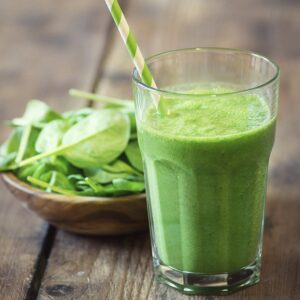Juicing vs. Blending | How Do You Decide?
A common topic I hear frequented around the wellness space, is the difference between blending and juicing. Arguably at face value, there doesn’t seem to be much difference, that is of course until you dig a little deeper. Both seemed to take on an upward trend over the past couple years, specifically to those who were looking to detox their bodies, or starting a new health and wellness regimen. Let’s look at a few of the main differences shall we? 
Juicing
Juicing is the process in which water and nutrients are extracted from the produce, and the indigestible fiber is discarded. While eliminating the fiber, the digestive system isn’t required to work as hard to break down the food and absorb the nutrients. This process also makes the nutrients more readily available for the body in larger quantities than if you were to eat the fruits and vegetables whole.
This process can be helpful for those who suffer from a sensitive digestive system or an illness that inhibits your body from processing fiber properly, or safely – However having said this, there are other alternatives to accommodate these things aside from juicing. You want to keep in mind also, that fiber is filling, so many who are strictly juicing will often find they are regularly hungry due to the absence of fiber.
Juicing can be found in most detoxifying programs because they are nutrient rich and have the ability to restore the body to a cellular level. Something important to note as well when it comes to juicing, is that while the juicer does extract the water and most nutrients, there is a lot of waste – meaning a lot of wasted produce that isn’t used in the final product. Given the amount of produce that is required for the suggested servings, this can be quite costly, especially when a bulk of it is not being used.
Another important note about juicing is that when you remove the fiber from the fruits and vegetables that you are juicing, the liquid is absorbed into your bloodstream quite quickly. Although this might sound ideal, if you are only juicing fruits, or adding fruits this will cause a rapid spike in blood sugar and can create unstable blood sugar – thus resulting in energy loss, mood swings among others!
Blending
Unlike juicing, blending consists of the entire fruit and/or vegetable, skin included – this is where the fiber is found in addition to the fiber already present in vegetables. Through the blending process, the fiber is broken apart which makes it easier to digest. This also creates a slower, even process for the body to absorb the nutrients and maintain a stable blood sugar level throughout. Blending, or also referred to as smoothies, can also be quite filling and are a great alternative or addition to breakfast and/or snacks throughout the day.
You will find that blending will require less produce and still create a larger quantity as a result of the fiber that remains.
Both juicing and blending are great for people on the go, I am a little bias when it comes to the two and definitely recommend blending over juicing. There’s something about wasting fresh produce and removing fiber and spiking blood sugars that just don’t sit right with me!
Here’s one of my favourites!
Ki’s recipe for Green Juice – No Juicer required!
Ingredients
- Because there are no fruits included in this recipe, the juice will not be sweet, but still delicious
- This juice will contain pulp – that’s where all the fiber goodness is found!
- Not adding fruits, will reduce any chance of indigestion or bloating
- You can refrigerate this juice for up to two days, of freeze for up to six days
- Best consumed however, within four hours to obtain its maximum benefits
- Juice should be had at room temperature – best to avoid drinking it cold
- Choose organic vegetables whenever possible
Are you a juicer or a blender? Love to hear your feedback!
Thank you so much for reading! I hope you have found some valuable information, if so, I’d love to hear about it! Please feel free to share this post with anyone who might benefit, and comments are always welcomed and appreciated.
I look forward to connecting with you next time!
And be sure to check out why you should order your family’s next meal courtesy of Ki’s Kitchen
From my kitchen to yours,
Kiran Bissoon
